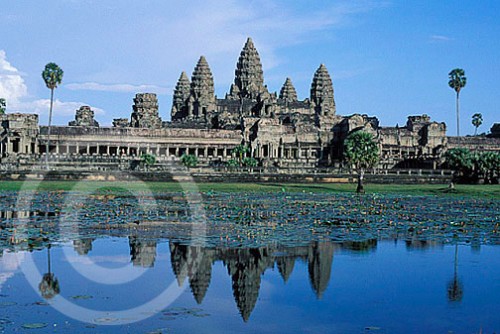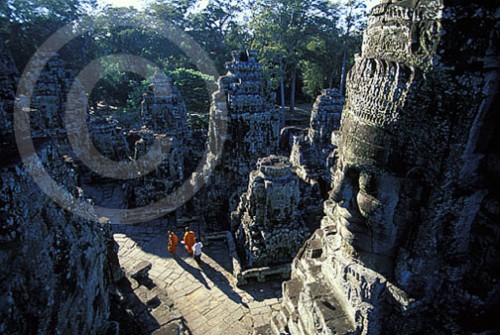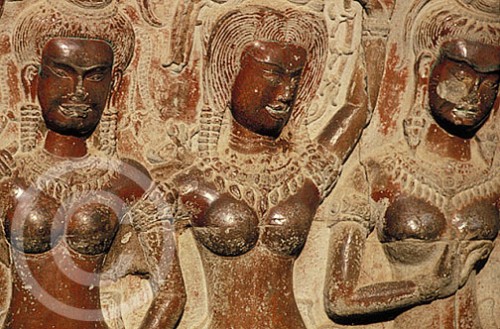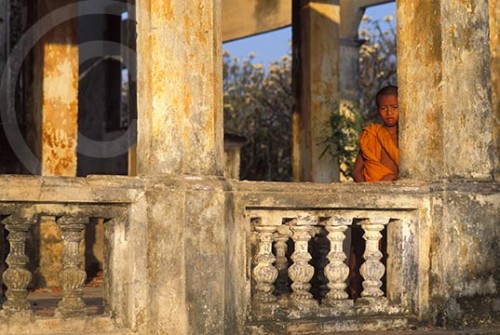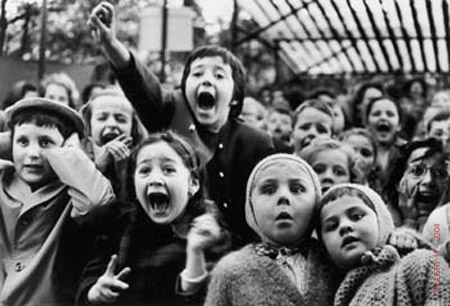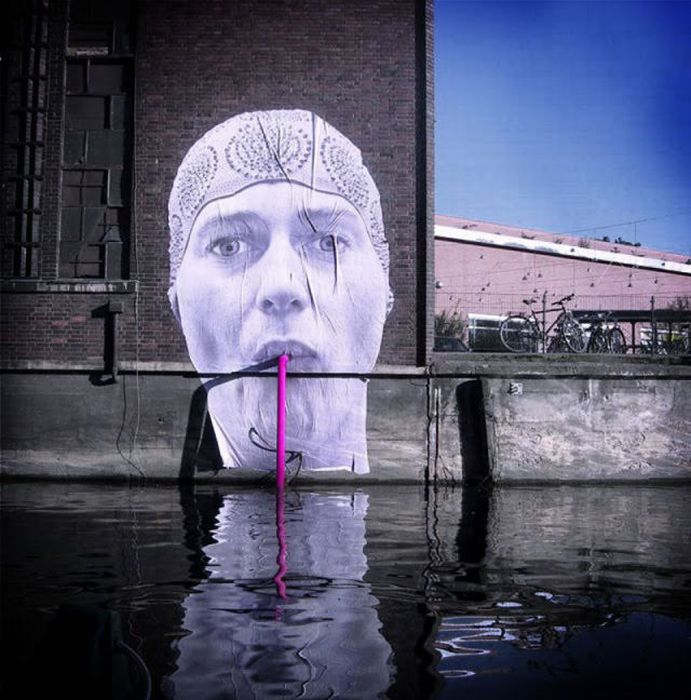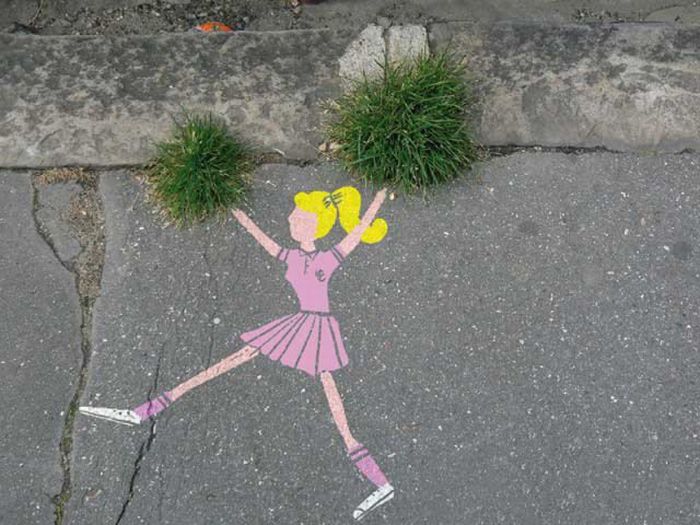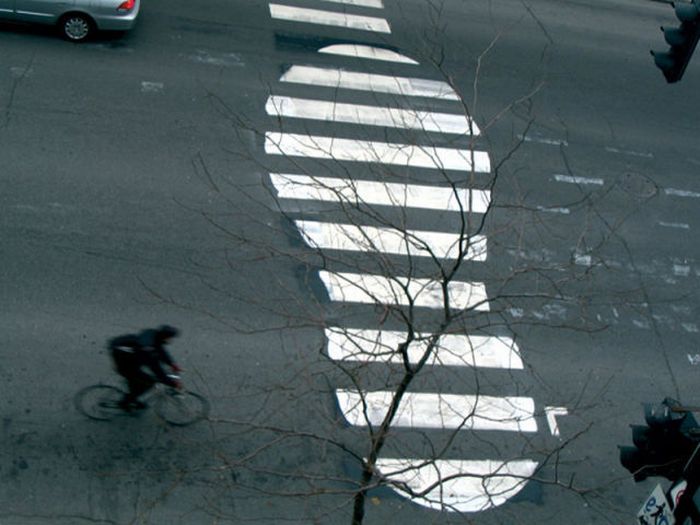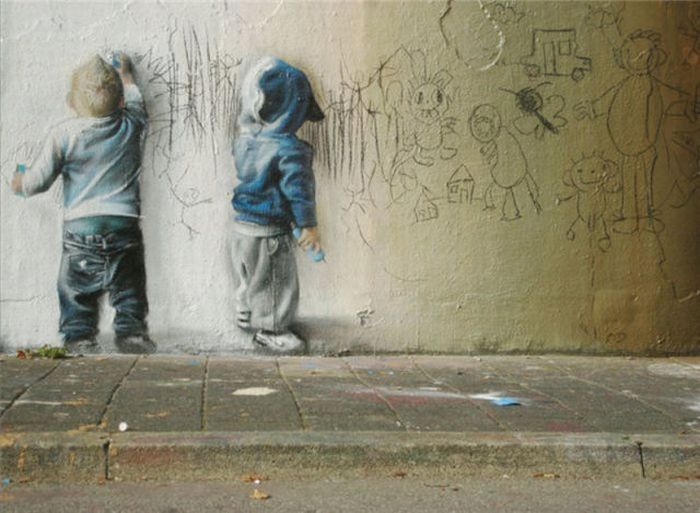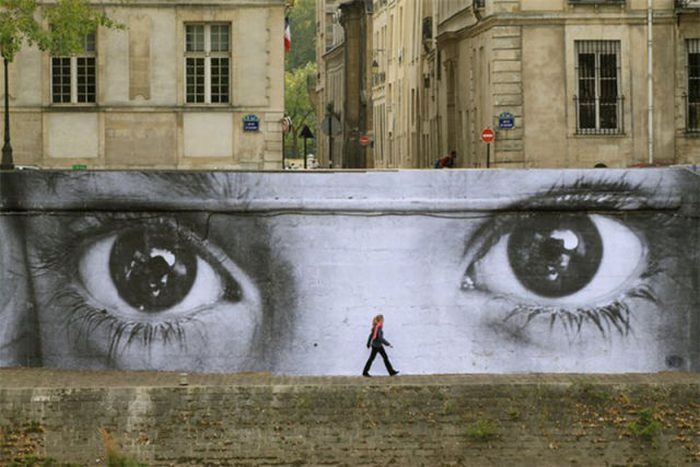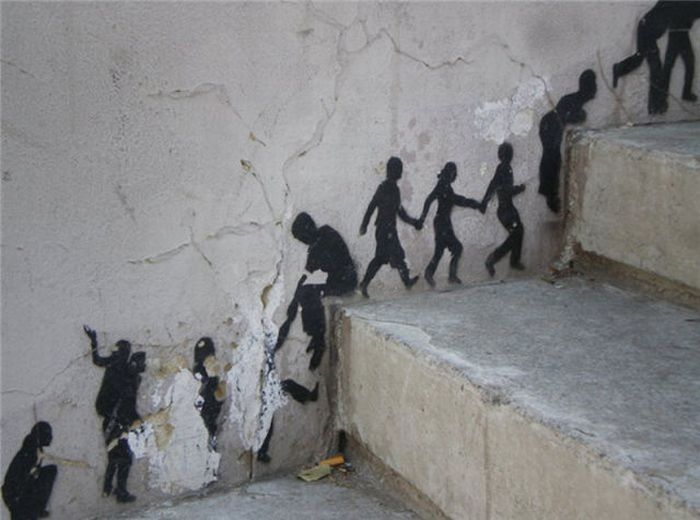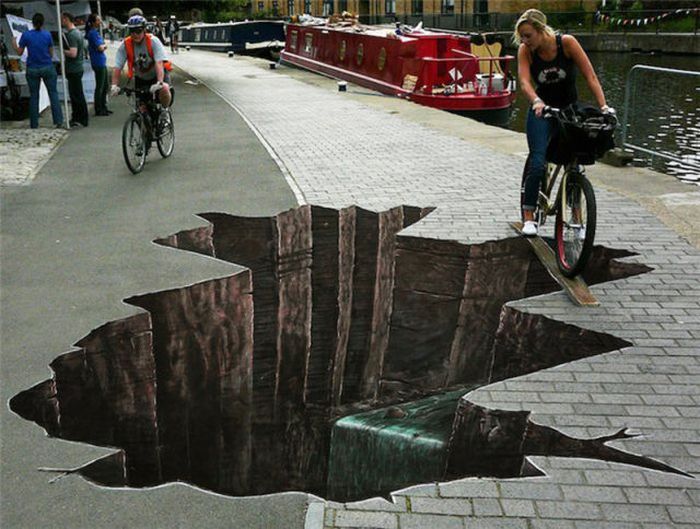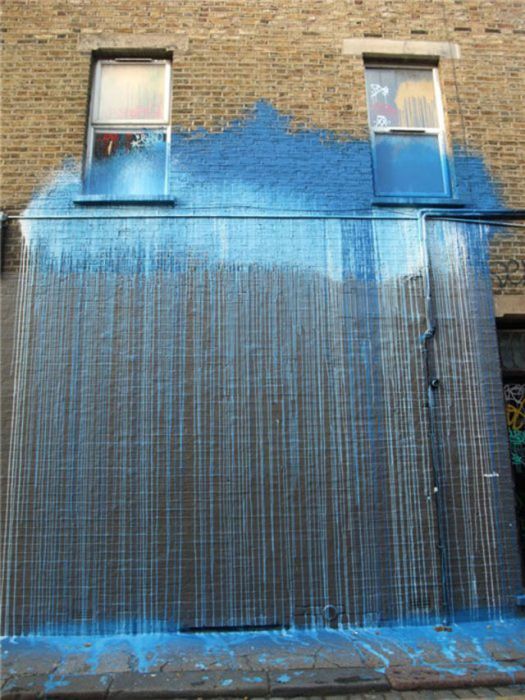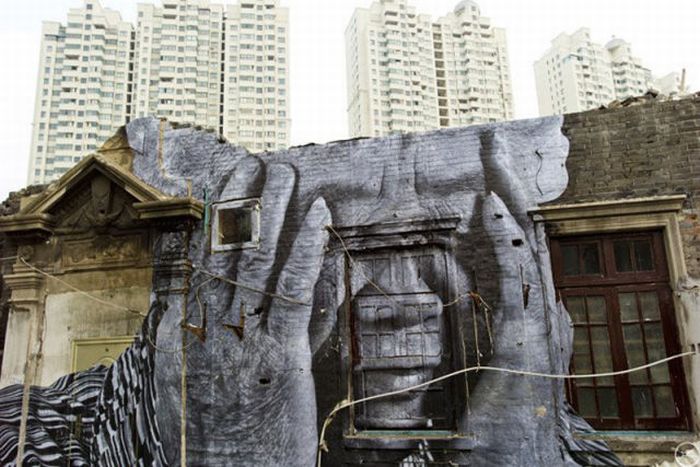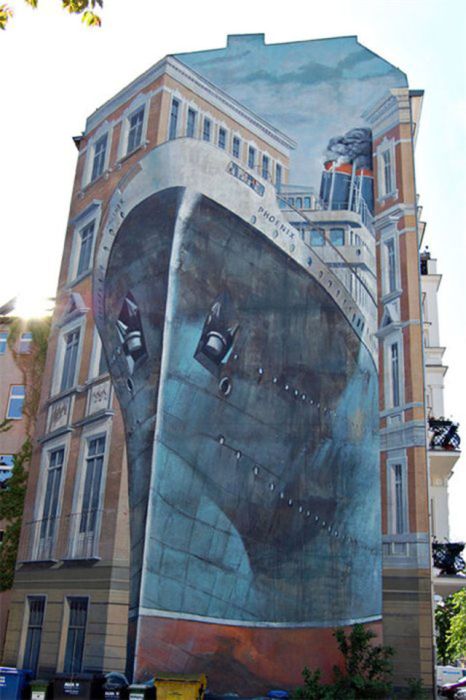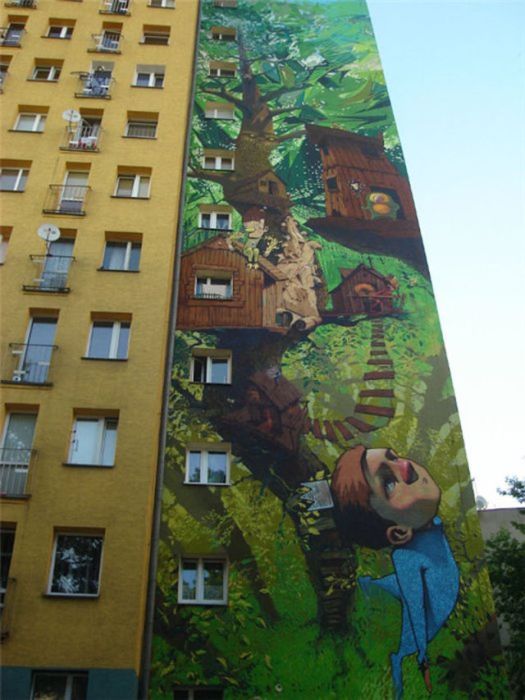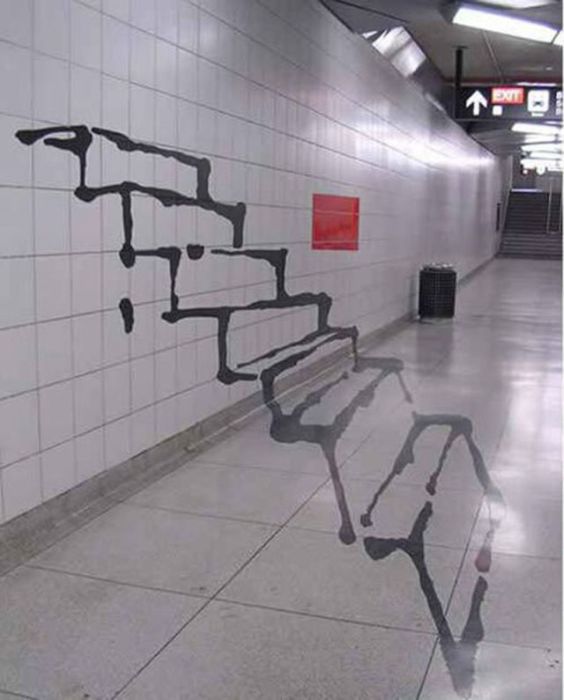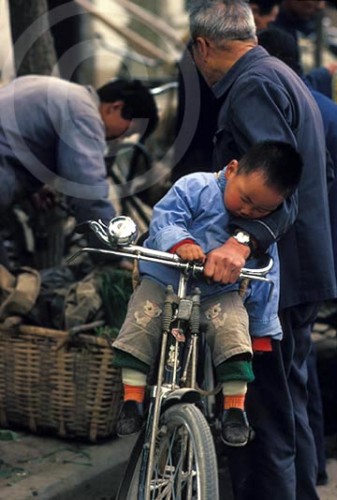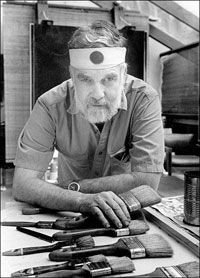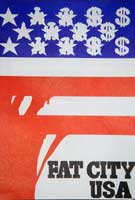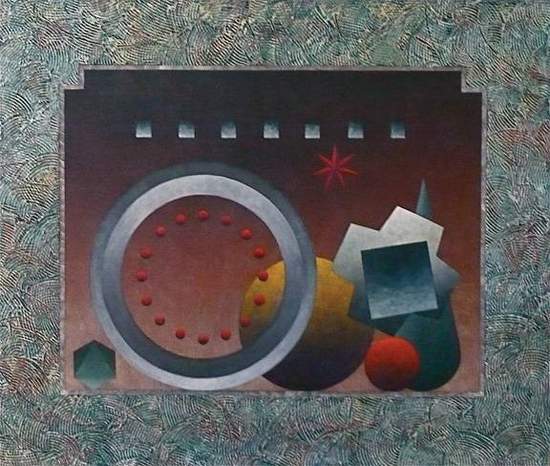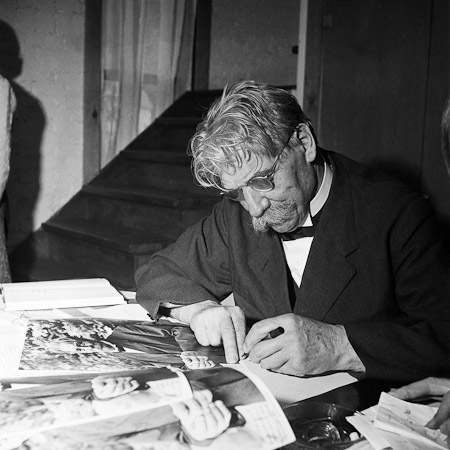Take a peek at the photograph below and try to guess where in the world it was taken. Drop your answer in the comment box and check back tomorrow to see if you are right.
Tag Archives: photography
Thursday’s Picture of the Week: China
Behind the Scenes: The year is 1995 and Jeffrey is photographing on assignment for The New York Times Travel Section in Beijing, China. He’s there to do a story about Ritan (Temple of the Sun) Park.
This expansive park is one of the oldest sites in Beijing and is like an oasis in the midst of a teeming metropolis. Commissioned by Ming Dynasty emperor JiaJing in 1530, it is filled not only with massive trees, gardens, pavilions, and small lakes, but many places for people to gather and recreate. Tai chi and ballroom dancing are common forms of exercise found here.
When Jeffrey comes upon this elderly gentleman wearing a traditional Mao jacket, fully immersed in the solitude of his early morning ritual, he knows he has captured the essence of Ritan Park and also created a wonderful symbol of ancient China–still alive and well in modern day Beijing.
At its core, tai chi is a martial art (also referred to as shadow boxing), but it is now commonly practiced to strengthen and promote mind/body health. Jeffrey loved how the man was entranced in the shadow of his own dance, and how the traditional Chinese red wall and green tiles melded with the shadow and gesture, creating pure harmony.
This image was created with a Nikon F4, a Nikkor 85mm lens and Fuji Velvia film.
Postscript: A week after it was published as the cover of The New York Times Travel Section, Broadway’s legendary song and dance man, Tommy Tune, wrote a letter to the editor extolling the artistic merits of Jeffrey’s photograph and how he captured the magic of the moment.
“It was quite an honor coming from Tommy Tune, whom I admire for his artistry and accomplishments in the field of dance,” said Jeffrey. “The fact that he would take the time to write a letter to the editor…there really is no higher compliment.”
Name That Photographer
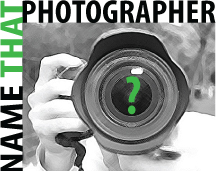 See if you can NAME THAT PHOTOGRAPHER from the following five clues:
See if you can NAME THAT PHOTOGRAPHER from the following five clues:
1) He was an American photographer born in 1923.
2) He once said, “If a day goes by without my doing something related to photography, it’s as though I’ve neglected something essential to my existence, as though I had forgotten to wake up. I know that the accident of my being a photographer has made my life possible.”
3) His portraits are easily distinguished by their minimalist style, where the person is looking squarely in the camera, posed in front of a sheer white background. He is also distinguished by his large prints, sometimes measuring over three feet in height.
4) His obituary published in The New York Times said that “his fashion and portrait photographs helped define America’s image of style, beauty and culture for the last half-century.”
5) His son was famous for writing a book about an exotic and distant land.
Find out if you know the correct answer by clicking here: ANSWER. After you take a peek I’d love to know what you think of this legend’s work. Which are your favorite photographs? If you’d like to see more, click here: MORE PHOTOGRAPHS.
Thursday’s Picture of the Week: Cambodia
 Behind the Scenes: It’s 1989 and the Khmer Rouge are still fighting in Cambodia. Pol Pot’s official reign of genocidal terror has ended, but the aftermath of the “Killing Fields,” as it was coined in the grizzly 1984 film, still lingers.
Behind the Scenes: It’s 1989 and the Khmer Rouge are still fighting in Cambodia. Pol Pot’s official reign of genocidal terror has ended, but the aftermath of the “Killing Fields,” as it was coined in the grizzly 1984 film, still lingers.
Jeffrey is in Cambodia with Harry Rolnick, a foreign correspondent for the Bangkok Post. They are there to tell the story of the restoration quietly taking place at Angkor Wat Temple Complex. A handful of scientists from the Archaeological Survey of India have begun work on Cambodia’s most important archaeological site.
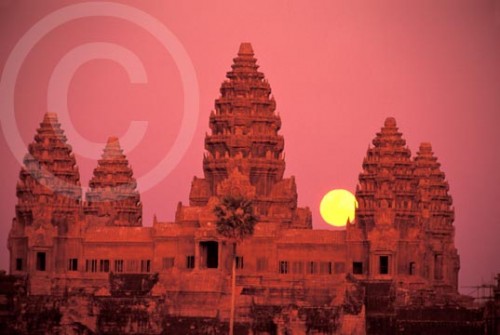 Angkor Wat, an ancient city built by King Survyavarman II in the 12th century, has taken a beating from years of neglect and non-stop fighting. Khmer Rouge guerrillas have looted temples, decapitated sculptures, and sold the spoils on the black market to raise cash for the war. The site’s exquisite Khmer architecture, which is often compared to that of ancient Greece and Rome in importance, has also been strangled by the encroaching jungle. Vines and roots have damaged structures, causing many of its sandstone temples, reliefs, and statues to crumble.
Angkor Wat, an ancient city built by King Survyavarman II in the 12th century, has taken a beating from years of neglect and non-stop fighting. Khmer Rouge guerrillas have looted temples, decapitated sculptures, and sold the spoils on the black market to raise cash for the war. The site’s exquisite Khmer architecture, which is often compared to that of ancient Greece and Rome in importance, has also been strangled by the encroaching jungle. Vines and roots have damaged structures, causing many of its sandstone temples, reliefs, and statues to crumble.
The restoration of Cambodia’s most important site (and symbol) is a tiny glimmer of hope for a country that has not dared to hope since the Khmer Rouge murdered approximately two million of its people (one quarter of the population).
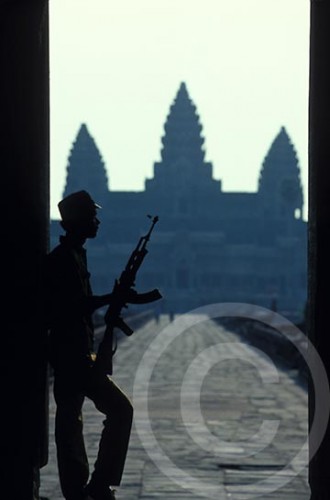 Because the U.S. still has not established diplomatic relations with Cambodia after Pol Pot’s reign of terror, Jeffrey and Harry must first fly from Bankgok, Thailand to Ho Chi Minh City, Vietnam to obtain a visa to enter the country. A few days later they will backtrack to the capital of Cambodia, Phnom Penh, then they will catch a puddle-jumper plane to Siem Reap, the province in which Angkor Wat is located.
Because the U.S. still has not established diplomatic relations with Cambodia after Pol Pot’s reign of terror, Jeffrey and Harry must first fly from Bankgok, Thailand to Ho Chi Minh City, Vietnam to obtain a visa to enter the country. A few days later they will backtrack to the capital of Cambodia, Phnom Penh, then they will catch a puddle-jumper plane to Siem Reap, the province in which Angkor Wat is located.
After a hard and fast landing (to avoid gunfire, they are told), they head to the Grand Hotel, the only hotel operating in the area at the time. Tourism has been at a standstill for more than a decade. When the bellman of this dilapidated establishment leads Jeffrey and Harry to their rooms, Jeffrey notices that his bed is pushed awkwardly into a far corner. When he asks about it, the bellman explains, “That is for your safety—in case there is gunfire. Bullets will not be able to hit you over here if they come through your window.”
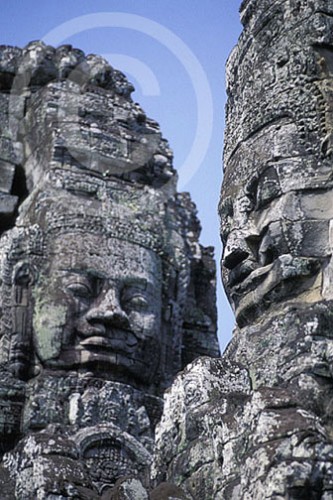 The next day an interpreter and several Cambodian soldiers meet Harry and Jeffrey on the outskirts of Angkor Wat. The complex is over five hundred acres, and they must walk through the jungle to the temples where the archaeologists are working. The men are told under no uncertain terms may they leave the single narrow path they plying. Live mines litter the landscape everywhere else. Nearby gunfire reminds them that this is no idle warning.
The next day an interpreter and several Cambodian soldiers meet Harry and Jeffrey on the outskirts of Angkor Wat. The complex is over five hundred acres, and they must walk through the jungle to the temples where the archaeologists are working. The men are told under no uncertain terms may they leave the single narrow path they plying. Live mines litter the landscape everywhere else. Nearby gunfire reminds them that this is no idle warning.
Jeffrey and Harry walk cautiously and stick closely to the Cambodian soldiers who know every inch of the area. The emptiness of Angkor Wat and the heavy air blanketing the jungle creates an eeriness that makes the back of Jeffrey’s neck prickle. Harry continually looks over his shoulder. Even the slightest snap of a twig from a jungle creature or birds taking flight makes them pause. Jeffrey can’t help wonder, How do we know the Khmer Rouge haven’t laid another mine on the path last night and how do we know we won’t be ambushed now?
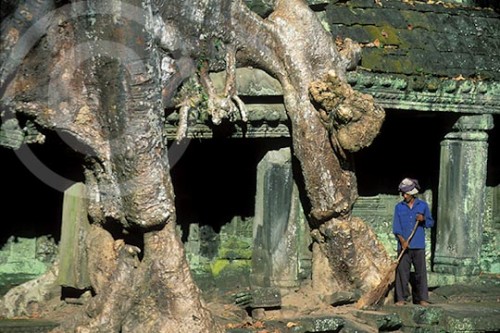 Eventually they arrive where the archaeologists are working. The interpreter introduces the men and points out many of the sites wonders, including giant Hindu sandstone faces, exquisite bas-reliefs, and temples covered in roots more massive than each of them. It doesn’t take long before Jeffrey is able to create a powerful visual story about what is taking place here.
Eventually they arrive where the archaeologists are working. The interpreter introduces the men and points out many of the sites wonders, including giant Hindu sandstone faces, exquisite bas-reliefs, and temples covered in roots more massive than each of them. It doesn’t take long before Jeffrey is able to create a powerful visual story about what is taking place here.
After spending the entire day at Angkor Wat, they make their way back out to the other side where a car is expected to be waiting for them. As they reach the outskirts of the site and walk along a road near a small village, they come upon a young boy carrying an AK-47 rifle. This barefoot youngster, who is wearing nothing more than threadbare shorts, is protecting his village against the Khmer Rouge. As he walks under the weight of his gun, his onyx eyes reveal a life that has already witnessed far too much.
Jeffrey can’t help but think back to his own carefree childhood, and tries to swallow the sadness rising in his throat as he gets down on his knees to create this boy’s portrait. He can only hope that peace will come soon to Cambodia, and with it, a return to childhood for this young “man.”
This photograph was created with a Nikon F4, a Nikor 24mm lens and Fuji Velvia film.
Postscript: Jeffrey has returned to Angkor Wat on assignment two more times since his first trip in 1989, and each time he has witnessed it coming back to life more and more. Restoration is now nearly complete and Angkor Wat has been listed as a World Heritage Site, along with Cambodia’s largest tourist attraction. The best part is that Jeffrey has never come across another child carrying an AK-47 rifle in Cambodia.
If you want to learn more about Angkor Wat, click HERE.
The Answer to Name That Photographer
Clearly I made yesterday’s photography quiz WAY too easy. As many of you guessed, the answer is ALFRED EISENSTAEDT, a legend affectionately known as “Eisie.”
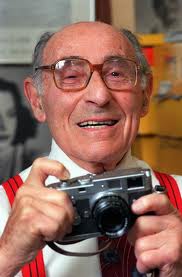 For those of you who don’t know about Eisenstaedt, you will make your life better if you take a moment to discover his work. He was a master in every sense of the word.
For those of you who don’t know about Eisenstaedt, you will make your life better if you take a moment to discover his work. He was a master in every sense of the word.
Here are a few links to check out his way of seeing the world:
This beautiful YouTube video-Masters of Photography (click on link to see it) is well-worth watching.
Or you can simply click on this Google search of his images. and marvel at the breadth of his portraiture–from Marilyn to Einstein to Kennedy. Or take a peek at this Wikipedia page and learn a bit about his background.
Here is my favorite Eisenstaedt photograph: Children at Puppet Theatre, Paris, France, 1963. It sits next to my desk so I look at it every day. I will never cease to be amazed at the diverse range of emotions expressed by these children while they are all experiencing the same moment.
I will leave you with one of Eisie’s quotes, which I think not only relates to photography, but to writing and many other aspects of life as well.
“Once the amateur’s naive approach and humble willingness to learn fades away, the creative spirit of good photography dies with it. Every professional should remain always in his heart an amateur.”
- Alfred Eisenstaedt
PS: If you missed yesterday’s quiz, take a peek here to read the clues and learn a few more fun facts. The next quiz won’t be nearly as easy!
Name That Photographer
Put on your thinking caps, photography fans! I’m starting a fun new quiz. See if you can NAME THAT PHOTOGRAPHER by reading the following five clues:
1) He was a Jewish German-American photographer born in 1898.
2) In 1936 he became one of the four original photographers at LIFE magazine, where he produced 2,500 assignments and 92 covers.
 3) He was best known for his photograph capturing the celebration of V-J Day in Times Square.
3) He was best known for his photograph capturing the celebration of V-J Day in Times Square.
4) He once famously said, “It’s more important to click with people than to click the shutter.”
5) He lived to the age of 96 and photographed President Clinton and his family on Martha’s Vineyard when he was 94 (the last photos of his life).
Bonus clue: He created one of my all-time favorite images ever in Paris called, “Children at Puppet Theatre.” It sits right next to my desk and makes me smile every day.
Write your guess in the comment box, then check back tomorrow morning (March 20th) for the answer.
AND NO CHEATING!
Steve & i: One Photographer’s Improbable Journey with Steve Jobs Now on Kindle
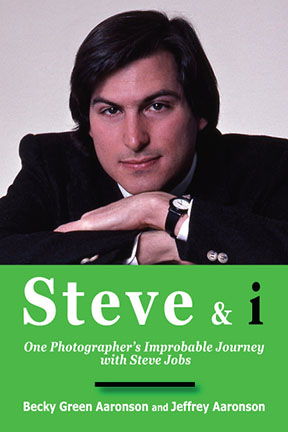 Jeffrey and I are excited to announce the launch of our ebook, Steve & i: One Photographer’s Improbable Journey with Steve Jobs.
Jeffrey and I are excited to announce the launch of our ebook, Steve & i: One Photographer’s Improbable Journey with Steve Jobs.
It is now available for Kindle devices at Amazon.com and will be available for the NOOK, Sony Reader and iPad soon.
We hope you will be one of the first to download Steve & i, and if you feel inspired by what you read, please leave a review on Amazon.
Of course, we’d be thrilled (and eternally grateful) if you would tell others about it too.
Don’t have a Kindle? No problem. Amazon now has a free app you can download for both your Mac and PC. Here are the links: Kindle for Mac. Kindle for PC. If you have an Amazon account you can purchase the book and read it on your computer. You can also download a free Kindle app for your iPhone. Just go to the app store and batta boom, batta bang, you’re all set.
Our book is priced at $2.99 and a portion of the proceeds will be donated to several leading cancer research institutes because…well, as you know, cancer sucks, and it took Steve Jobs’ life far too soon.
Book description: When photographer Jeffrey Aaronson received a call from Newsweek in 1984 to photograph Steve Jobs, he had no idea who Steve Jobs was or what impact Jobs was about to have on his life or the world.
Steve & i: One Photographer’s Improbable Journey with Steve Jobs tells the captivating story of a young photographer and a young entrepreneur, and the friendship they forge when they are both twenty-nine years old—just as Aaronson is beginning to offer the world a new view through his lens and Jobs is beginning his mission to change it by introducing the most user-friendly personal computer ever conceived.
This 38-page little powerhouse of a book is packed with personal anecdotes and rarely seen photographs, which not only chronicle the launch of the first Macintosh personal computer, but also capture the essence of Steve Jobs the man before he became the icon.
It’s a must read for those who want to experience and be inspired by a side of Steve Jobs that few people have glimpsed.
Early reviews of the book read…
“A critical moment of shared inspiration is captured in this short but sweet profile of an intimate friendship between two highly motivated young men, forged immediately in trust and professional integrity. A rare, honest glimpse into the ensuing creative sparks that fly in the early blossoming careers and bonding of two visionaries who decide to be inspired by others AND courageously follow their callings and dreams. Bravo!”
-Bill Black, Director of Photography, Reader’s Digest“This is not just a story about how friendships evolve from humble or chance beginnings. Rather, it’s an object lesson about mutual respect, curiosity, and a passion for excellence as the ingredients that propel true visionaries. Bravo, Jeffrey Aaronson, for enlightening us with the quieter, gentler side of the genius Steve Jobs. ”
-Larry C. Price, Pulitzer Prize-winning photojournalist“This is a sweet little book about a hugely talented and creative photographer’s relationship with a hugely talented and creative entrepreneur. With warmth, insight, and keen appreciation, Jeffrey brings back to life a man who for all his reputed prickliness and short temper was capable of simple, deep friendship.”
-Bob Morton, Former Editor-in-Chief of Abrams and the Aperture Foundation“Photographers and Apple fans alike won’t want to miss this moving portrait of a private but profoundly influential man.”
-Russell Hart, Former Executive Editor American Photo
Artists with a Sense of Humor
If humor is one of the highest forms of intelligence, then clearly these street artists are brilliant. I hope you are as bowled over as I was by these creative minds.
Unfortunately, I do not have the original source to properly credit the photographers or the curator of this delightful collection of images, but here’s a big shout out to Hensley Peterson for forwarding this piece to me via email. If anybody knows the original source, please let me know.
The Art of Faux-tography
A few weeks ago I was driving my daughter to school, and in between belting out Lady Gaga and talking about our busy day ahead, Olivia and I simultaneously had the air sucked right out of our lungs.
We’d just driven down our little stretch of Mission Canyon, and as we approached the Mission and looked out over the Rose Garden to the ocean in the distance, we witnessed the most spectacular morning light dancing on billowy periwinkle clouds, it made goosebumps rise on my arms.
The light’s reflection in the ocean below looked like a kaleidoscope shimmering on smooth gray glass.
In Santa Barbara beauty wraps its big, warm arms around us every day, so you’d think we’d be immune to it, but my daughter and I were so stunned, the only word to emerge from our mouths was a collective, “Woooowwwwww.”
My immediate reaction was to reach for my camera phone. It was instinctual, automatic—as if there were no other way to enjoy this moment without documenting it. I fumbled for my purse, but the logistics of driving prevented me from taking a picture. Instead I was forced to enjoy the moment during the moment, rather than snapping it for posterity. As a result, I was able to share it with the beautiful person in the backseat—something we could both store deep in our memory banks instead of somewhere on my camera’s memory card.
What happened next though, is what happens all too often.
After I dropped Olivia off at school, I got in my car again—this time to head to the gym. It was one of those mornings Mother Nature was clearly in the mood to show off. This time she sent a brilliant rainbow arching right over the mission. Its ROYGBIV perfectly framed the Spanish architecture, making it look like it belonged on the set of the Wizard of Oz.
It was spectacular. So spectacular, in fact, this is what I saw: the Range Rover in front of me blocking traffic in the intersection so the driver could poke his camera phone out his sunroof to take a picture. A woman walking along the Rose Garden pushing her double-stroller, digging in her diaper bag to get her camera out, missing the moment with her children. Two cars almost colliding as they both illegally pulled over into the bike lane so each driver could take a picture.
My IPhone was sitting in the passenger seat next to me so I could easily pick it up and take a picture out my car window. I was so dismayed by what I saw though, I knew I didn’t want to be one of those people. I also knew I wasn’t at the proper angle to create a memorable photograph, nor did I have a camera that would do it justice.
STILL, the compulsion to capture the moment consumed me like it consumed the others. In a matter of seconds I caved, illegally pulling into the bike lane like the other yahoos.
As I zipped down my window and snapped a few images, I knew the pictures were crap before I even looked at them. I spent so much time trying to zoom in and out to get a good composition, for which one did not exist from where I was sitting in my car, that I missed the peak of the color. By the time I’d shot off three frames, the light had faded.
I could only laugh at myself for representing the absurdity of what photography has become.
Technology has created such easy access to the medium that we are all now photographers, or more accurately, faux-tographers. Most of us do not know an F-stop from a truck stop. Nor do we know shutter speeds, proper lighting or good composition. Most of us never learned the art of photography. We just know we have the ability to take pictures and we love doing it (myself included).
It made me wonder, “What is it about photography that is so powerful that it makes us lose our common sense?” Why are we so compelled to take pictures?
This may sound like a funny question coming from somebody who has lived in the world of photography for more than two decades, but I’m not talking about professional photography. I’m talking about all of us with camera phones and PhD (Push Here Dummy) cameras.
This is what I surmised:
• Photography is about sharing. Like everybody else at the Mission that morning, I wanted to share my view of the rainbow with others…with you…with my family…with my friends. I wanted everybody to experience the beautiful moment that I had just experienced. Words could not remotely come close to how striking it was.
• Photography is about capturing, stealing, owning a moment—holding onto a piece of time forever.
• Photography makes it real to us. It proves it happened.
• Photography allows us to remember, to look back and recall an exact moment in time. While our memories may fade, our photographs provide a powerful beacon of recognition.
• Photography enables us to be sentimental, to linger, to celebrate events and people in our lives. Just think about all the family photo albums that adorn our coffee tables and bookshelves.
__________
Before digital cameras (in all their various forms), most people were careful and methodical about taking pictures. After all, it cost money to buy film and have it processed. And it took time and effort to drop the film off and pick it up once it was processed.
Now, after we purchase our cameras, it’s essentially free, and it’s effortless to shoot a bazillion photographs. And as we all know, if we take enough pictures, eventually we’re bound to at least get one good image.
While I may chuckle and sneer at what photography has turned into, I’m right there will all the rest of you, clicking away, sharing away and loving it. But I never forget there’s a big difference between photography and faux-tography.
__________
Because I hate to only share a crappy picture on my blog with you, allow me to end this post with a few classic images created by a real photographer (one, with whom you know by now, I’m quite smitten).

A Christian Zionist woman holding the new flag of South Africa in Soweto during a rally for Nelson Mandela
Thursday’s Picture of the Week: Belief in Motion
This Thursday’s Picture of the Week has little to do with exotic locations or unusual circumstances. Rather, it has everything to do with what it represents: belief.
Behind the Scenes: Aspen 1981—Snow is falling in fat, heavy flakes. Jeffrey knows it’s a perfect morning to create a photograph he’s been envisioning since he took a photo workshop from renowned photographer, Ernst Haas, several months earlier.
Haas is considered one of the most important figures in 20th century photography and is lauded as a leader in the art of color imagery.
Jeffrey has only owned a camera for a few years and is awash in enthusiasm for the art form, and the unlimited possibilities it offers.
 The workshop Haas leads at Anderson Ranch Arts Center focuses on motion, a technique he pioneered when he photographed bullfighting and the Indianapolis 500 in the 1950′s. Instead of shooting a fast shutter speed and freezing the subjects, as was typical of the time, he shot them with a slow shutter speed to capture the beauty of the motion.
The workshop Haas leads at Anderson Ranch Arts Center focuses on motion, a technique he pioneered when he photographed bullfighting and the Indianapolis 500 in the 1950′s. Instead of shooting a fast shutter speed and freezing the subjects, as was typical of the time, he shot them with a slow shutter speed to capture the beauty of the motion.
• • •
“To express dynamic motion through a static moment became for me limited and unsatisfactory. The basic idea was to liberate myself from this old concept and arrive at an image in which the spectator could feel the beauty of a fourth dimension, which lies much more between moments than within a moment. In music one remembers never one tone, but a melody, a theme, a movement. In dance, never a moment, but again the beauty of a movement in time and space.”
–Ernst Haas
The approach Haas teaches at his workshop resonates with Jeffrey, and he knows he wants to capture the beauty and fluidity of horses running in the snow.
• • •
On the morning of the snowstorm, while most people are loading up their skis or hunkering down with a hot cup of coffee and a good book in front of the fireplace, Jeffrey puts on his heavy Sorrel boots, gets in his car and drives up Red Mountain.
After navigating the steep, windy road overlooking town, he parks his car next to a small meadow where horses are being boarded for the winter. The wind is blowing, flakes are sailing, and the horses begin running as soon as Jeffrey gets out of his car.
Jeffrey raises his camera and captures poetry in motion.
• • •
What happens next is where belief comes into play…
A few years later, Jeffrey is asked to be a part of a group exhibition at Unicorn Gallery, an Aspen gallery owned by entrepreneur Randy Woods. Jeffrey is humbled to be in the company of abstract painter, Richard Carter (former assistant to renowned artist Herbert Bayer of the Bauhaus School), and print maker, Tom Benton, creator of the famous Hunter Thompson campaign posters of the 70s.
On the night of the opening, the gallery is abuzz with art enthusiasts, including internationally reputed photographer Ferenc (Franz) Berko.
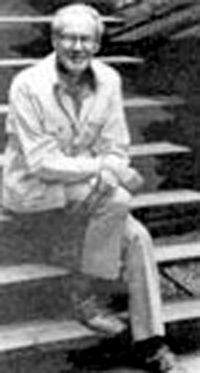 Berko, a tall, slender, ascot-wearing European transplant, greets Jeffrey with a gentle smile and quiet hello.
Berko, a tall, slender, ascot-wearing European transplant, greets Jeffrey with a gentle smile and quiet hello.
Franz and his wife, Mirte, had come to Aspen in 1949 at the invitation of Walter Paepcke to photograph the Goethe Bicentennial. It was during the age of Aspen’s transformation from purely a silver mining town to a world-class ski resort and artist colony.
The Berkos were enamored with the mountains and town and ended up staying permanently. Below are a few images Franz shot over the years, when he not only turned his camera on the Goethe Bicentennial, but the Aspen Institute, the Aspen Music Festival and numerous other subjects.
©Berko Photos: Top (L) Arthur Rubinstein, (R) Albert Schweitzer, Middle (L) Work on the Herbert Bayer wall, (R) Ski touring up Pearl Pass. Bottom (L) Children, (R) Overview of ballerina
• • •
Later during the opening Berko approaches Jeffrey once again. This time he simply says, “I would like to buy a print of your horses running for my daughter.”
Jeffrey is stunned.
He smiles and stammers for a minute, then replies, “Franz, I would like to give you a print.”
Franz will have nothing to do with it.
“No, I insist I pay you for it. Your art is worth much more than you are asking. Please make me a print and bring it to Mirte’s toy store next week.”
“There’s only one thing,” he continues, “you must sign it.”
At that moment, Jeffrey knows for certain he is headed in the right direction following his passion for photography.
• • •
Franz and Jeffrey soon become dear friends, and Franz stays deeply interested in Jeffrey’s career, often giving him quiet advice throughout the years, until his death in 2000.
This photograph of the horses running will always remain a special image to Jeffrey because it represents so many things to him: his love of photography, his inner drive and enthusiasm when he was just beginning his career, and most of all, somebody’s belief in him and his ability to see.
“When you’re just starting out and one of the most respected photographers in the art world appreciates your work enough to buy a print, there’s no greater approval,” Jeffrey says.
• • •
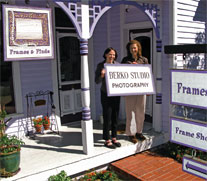 In a “small world” twist, the Berko Gallery, which is run by Franz’s granddaughter, Mirte Mallory, is now housed in a charming purple Victorian on Aspen’s Main Street—a home that Jeffrey and I owned and lived in for many years in the mid-1990’s.Yep, see that brick walkway? Jeffrey and I laid it with our own hands. “Our” purple Victorian will always hold sweet memories for us, and now it’s even more special because it holds the photographs of somebody who not only made a powerful impact on Jeffrey’s career, but also his life.
In a “small world” twist, the Berko Gallery, which is run by Franz’s granddaughter, Mirte Mallory, is now housed in a charming purple Victorian on Aspen’s Main Street—a home that Jeffrey and I owned and lived in for many years in the mid-1990’s.Yep, see that brick walkway? Jeffrey and I laid it with our own hands. “Our” purple Victorian will always hold sweet memories for us, and now it’s even more special because it holds the photographs of somebody who not only made a powerful impact on Jeffrey’s career, but also his life.
Now it’s your turn. Who has been the “Franz” of your life? Who has believed in you and given you the confidence to reach your potential? I’d love to hear all about this wonderful person!



